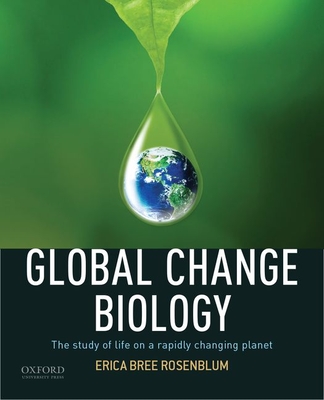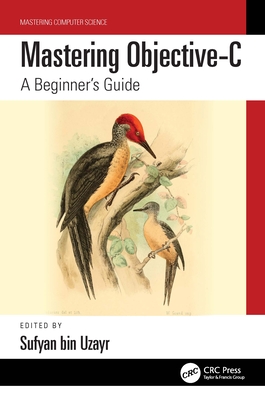图书简介
Global Change Biology is available in e-book format only. Print-on-demand can be provided for orders where print is specified. The first of its kind, Rosenblum goes beyond the narrow focus of existing texts, which tend to focus on climate only, by offering a conceptionally integrated approach to understanding how humans have impacted life on Earth. The textbook guides students to think about change across spatial and temporal scales and fills a unique niche of integrating ecological and evolutionary perspectives throughout.
UNIT I: SETTING THE STAGE; Chapter 1. Approaches in Global Change Biology; How Did the Field of Global Change Biology Develop?; How Are Global Change Biology Studies Designed?; What Key Research Approaches Are Used in Global Change Biology?; What Key Tools Are Used in Global Change Biology?; Core Concepts: How are Data Displayed?; Meet the Data: The Economic Value of Nature; Taking a Closer Look: The Value of Biological Diversity; Chapter 2. Brief History of Life on Earth; What Key Transitions Led to the Emergence of Life on Earth?; How Did Cellular Life Evolve and Diversify?; What Evolutionary Processes Shape Biological Diversity?; When Have Speciation and Extinction Rates Been Particularly High?; Core Concepts: What is a Phylogenetic Tree?; Meet the Data: The Ring of Life; Taking a Closer Look: Biological Levels of Change; Chapter 3. Rise of the Humans; When and How Did Early Hominids Evolve?; When and How Did Modern Humans Spread Around the World?; How Did Early Human Civilizations Impact the Environment?; Core Concepts: What Is In a Name?; Meet the Data: Ice Age Genetics; Taking a Closer Look: The Evolutionary Success of Humans; Chapter 4. The Anthropocene; What Is the Anthropocene and When Did It Begin?; What Are Patterns of Contemporary Population Growth?; How Are Contemporary Human Civilizations Impacting the Environment?; How Do Anthropogenic Stressors Interact with Each Other?; What Influences Overall Vulnerability to Global Change Pressures?; Core Concepts: What is Climate and How Is It Measured?; Meet the Data: Pollinators and Pesticides; Taking a Closer Look: Historical and Contemporary Climate Change; UNIT II: CORE RESPONSES TO GLOBAL CHANGE STRESSORS; Chapter 5. Core Responses: Move; How and Why Do Organisms Move?; What Is a Geographic Range?; What Factors Determine a Species’ Geographic Range?; Do Range Changes Occur Even Without Anthropogenic Influence?; What Types of Range Changes Occur in Response to Anthropogenic Pressures?; How Do Scientists Predict Range Changes?; Core Concepts: What Is a Niche?; Meet the Data: A Century of Change in Yosemite; Taking a Closer Look: Globalization and Invasive Species; Chapter 6. Core Responses: Adjust; What Is Phenotypic Plasticity?; Is the Capacity for Plasticity Consistent Across Traits and Species?; What Types of Plasticity Occur in Response to Global Change; What Mechanisms Underlie Phenotypic Plasticity?; How Do Scientists Assess and Predict Phenotypic Plasticity?; Can Plasticity Facilitate Long-Term Persistence?; Core Concepts: What Are the Mechanisms of Heredity?; Meet the Data: Phenology and Global Warming; Taking a Closer Look: Urbanization; Chapter 7. Core Responses: Adapt; What Conditions Are Required for Adaptation?; What Is an Example of Evolution by Natural Selection?; What Types of Adaptation Occur in Response to Global Change Pressures?; How Do Scientists Identify Adaptations and Predict Adaptive Potential?; Can Adaptation Prevent Extinction?; Core Concepts: Where Does Genetic Variation Come From?; Meet the Data: The Daphnia Time Machine; Taking a Closer Look: Coral Reefs; Chapter 8. Core Responses: Die; How Is the Survival of Individuals, Populations, and Species Connected?; What Are Examples of Extinction in Response to Global Change Pressures?; How Do Scientists Estimate Extinction Risk?; How Do Scientists Summarize Global Patterns of Extinction Risk?; What Is the Sixth Mass Extinction?; Core Concepts: What is Extinction Debt?; Meet the Data: The Sixth Mass Extinction; Taking a Closer Look: Amphibian Declines; UNIT III: COMPLEX RESPONSES TO GLOBAL CHANGE PRESSURES; Chapter 9. Community-Level Responses; What Are Key Types of Biological Interactions?; How Do Global Change Pressures Affect Biological Interactions?; How Does Extinction Affect Communities?; What Are Cascading Effects?; Core Concepts: What Are Above- and Below-Ground Food Webs?; Meet the Data: The Collapse of Mutualisms; Taking a Closer Look: Kelp Forests and Trophic Cascades; Chapter 10. Ecosystem-Level Responses; What Are Biogeochemical Cycles?; How Do Global Change Pressures Impact Ecosystems?; How Do Global Change Pressures Impact Large-Scale Earth Systems?; What Is a Feedback?; What Is Ecosystem Collapse?; What Is Ecosystem Resilience?; Core Concepts: What is a Biodiversity Hotspot?; Meet the Data: Greenhouse Gases in the Soil; Taking a Closer Look: Factors Influencing Response to Global Change; UNIT IV: NEW HORIZONS; Chapter 11. Conservation in an Era of Global Change; Why Is It Important to Explicitly Define Conservation Priorities?; Why Is It Important to Match Conservation Actions to Particular Biological Levels?; What Are Examples of Fine-Filter Conservation Strategies?; What Are Examples of Coarse-Filter Conservation Strategies?; What Is Adaptive Management?; Core Concepts: What is Climate Mitigation?; Meet the Data: Maximizing Evolutionary Diversity; Taking a Closer Look: Emerging Technologies and Conservation Ethics; Chapter 12. Aligning the Interests of Biodiversity and Human Society; What Are Coupled Human-Natural Systems?; What Societal Levers Can Be Used to Support Biodiversity Conservation?; How Can Individuals Support Biodiversity Conservation?; How Can Collectives Support Biodiversity Conservation?; How Can Policy Action Support Biodiversity Conservation?; What Is the Forecast for the Future?; Core Concepts: What is I=PAT?; Meet the Data: Financial Incentives for Dynamic Conservation; Taking a Closer Look: Environmental Worldviews
Trade Policy 买家须知
- 关于产品:
- ● 正版保障:本网站隶属于中国国际图书贸易集团公司,确保所有图书都是100%正版。
- ● 环保纸张:进口图书大多使用的都是环保轻型张,颜色偏黄,重量比较轻。
- ● 毛边版:即书翻页的地方,故意做成了参差不齐的样子,一般为精装版,更具收藏价值。
关于退换货:- 由于预订产品的特殊性,采购订单正式发订后,买方不得无故取消全部或部分产品的订购。
- 由于进口图书的特殊性,发生以下情况的,请直接拒收货物,由快递返回:
- ● 外包装破损/发错货/少发货/图书外观破损/图书配件不全(例如:光盘等)
并请在工作日通过电话400-008-1110联系我们。
- 签收后,如发生以下情况,请在签收后的5个工作日内联系客服办理退换货:
- ● 缺页/错页/错印/脱线
关于发货时间:- 一般情况下:
- ●【现货】 下单后48小时内由北京(库房)发出快递。
- ●【预订】【预售】下单后国外发货,到货时间预计5-8周左右,店铺默认中通快递,如需顺丰快递邮费到付。
- ● 需要开具发票的客户,发货时间可能在上述基础上再延后1-2个工作日(紧急发票需求,请联系010-68433105/3213);
- ● 如遇其他特殊原因,对发货时间有影响的,我们会第一时间在网站公告,敬请留意。
关于到货时间:- 由于进口图书入境入库后,都是委托第三方快递发货,所以我们只能保证在规定时间内发出,但无法为您保证确切的到货时间。
- ● 主要城市一般2-4天
- ● 偏远地区一般4-7天
关于接听咨询电话的时间:- 010-68433105/3213正常接听咨询电话的时间为:周一至周五上午8:30~下午5:00,周六、日及法定节假日休息,将无法接听来电,敬请谅解。
- 其它时间您也可以通过邮件联系我们:customer@readgo.cn,工作日会优先处理。
关于快递:- ● 已付款订单:主要由中通、宅急送负责派送,订单进度查询请拨打010-68433105/3213。
本书暂无推荐
本书暂无推荐














